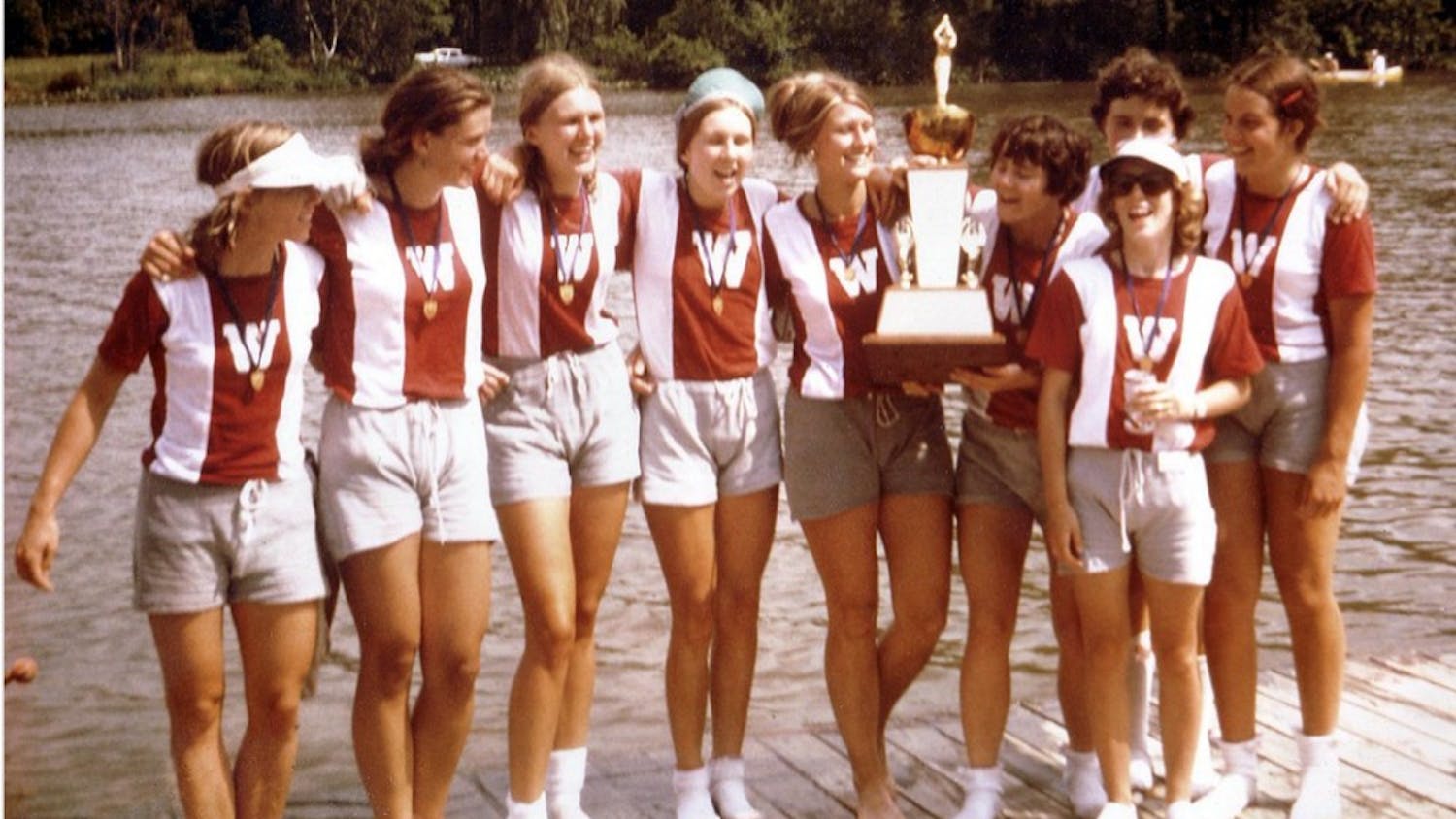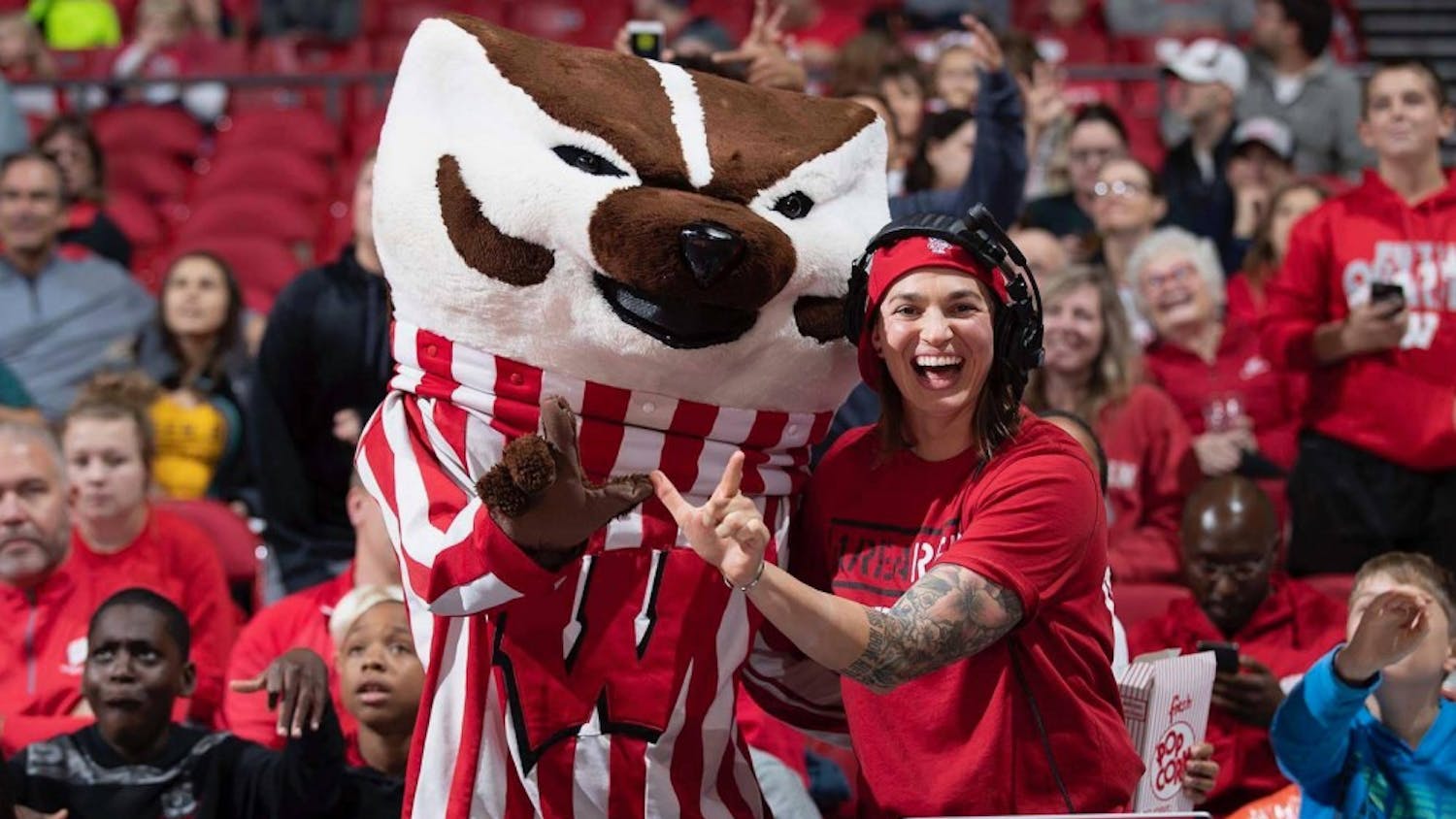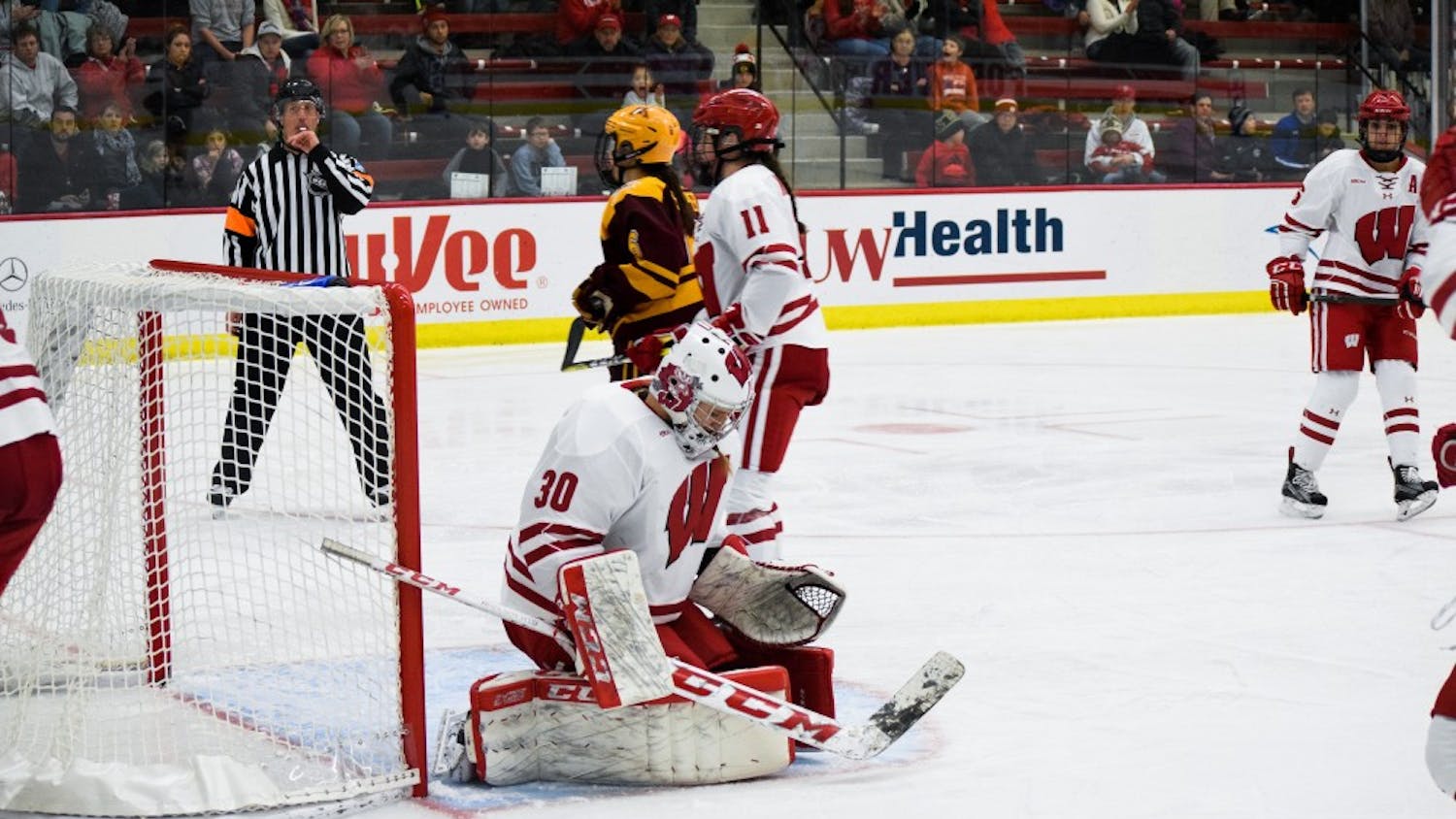From the moment she stepped on the ice for Wisconsin in October 2013, Ann-Renée Desbiens played like one of the best goaltenders in the world.
She not just set but obliterated records in goals against average, save percentage and shutouts. In 2017 she received the Patty Kazmaier Award as the best player in women’s college hockey, just the second goaltender ever to win.
She graduated as arguably the best goaltender — of any gender — in NCAA history.
Two years later, the closest she gets to the ice is section one of Labahn Arena, where she can be found most weekends watching her former teammates compete for the Badgers.
Desbiens is just one casualty, although a recent and particularly striking one, of women’s hockey’s unstable professional landscape. She did not respond to a request to comment for this story.
Even as the game continues to grow at the collegiate level, North America’s two professional leagues, the Canadian Women’s Hockey League (CWHL) and the National Women’s Hockey League (NWHL), struggle to provide their players living wages — forcing some of the world’s best post-collegiate players to choose between their financial well-being and their sport.
Fourteen former Wisconsin players are currently playing on professional rosters, six in the NWHL and eight in the CWHL, along with two recent Wisconsin players who were drafted but never signed contracts. Their stories paint a picture of a sport that, although on the rise, relies on tenuous financial situations at the league and individual levels.

Nine-to-five, and beyond
The first thing they mention is the travel.
In college, a road weekend meant a mid-Thursday departure with time for a class or two in the morning before a short chartered flight and a late-afternoon practice at the opponents’ rink. Come Friday’s game, the Badgers had no worries of “travel legs.”
Now, that same trip might involve a 5 a.m. alarm Saturday morning for a flight two hours later, landing in Calgary or Minnesota or Boston just in time for a quick bus ride to the arena before warmups.
“I'm very blown away by the way the league works. I wasn't expecting really to travel the day of,” former Wisconsin defender and current member of the CWHL’s Toronto Furies Mellissa Channell said. “It's a little hard on the body, I'm not gonna lie.”
Once the players have arrived, conditions don’t always get much better. Some weekends equipment managers can’t make the trip, leaving 25 players to figure out how to get all their gear on and off of a commercial flight without causing delays.
Both the CWHL and NWHL have now committed to providing meals for players on the road, but some players still sport stories of finishing a game and being forced to find their way to a grocery store to keep themselves sustained.
“[In college] there's multiple meals provided every day at school and on the road, and it's good, quality catered food and nice restaurants,” former Badger and current Metropolitan Riveters forward Madison Packer said. “And then you make a switch to the pros and you get 10 bucks on the road and you gotta figure it out for yourself.”
Even with meals provided, the hectic travel forces players to eat numerous meals in airports and on the go, not an ideal scenario for professional athletes trying to stay in peak fitness.
The condensed schedule — all games and associated travel are limited to Saturdays and Sundays — is a requirement of the two leagues’ harsh economic realities. The CWHL provides teams a $100,000 salary cap, with individual salaries ranging from $2,000 to $10,000. The NWHL initially promised salaries up to $26,000 but quickly reneged on that commitment. It now pays players between $5,000 and $7,000, depending on experience. The U.S. and Canadian Olympic federations support a select few elite players in their “Olympic pools,” but the majority of the league relies on a full-time job to pay for basic needs.
“It's tough, especially since we have approximately 20-some Olympians in our league, so to think that we have the top-end players playing in this league and some of them have to have side jobs because they're not able to support themselves, it's kinda frustrating,” Channell said. “You want to put all your time and effort into hockey if that's what you're leaning towards doing, but some people aren't able to do that because they have to pay for living, they have to pay for housing, they have to pay for all that.”
Balancing a combination of graduate school, work and their professional careers, the sport’s best players live a lifestyle far from the popular fantasy of elite professional athletes.
Forget sports cars. Many players’ salaries barely cover the cost of gas to get to the rink for practices and games, Channell said. Nightlife? Try nightly practices that can end as late as 10:30 or 11 p.m. even before the drive home, with another nine-to-five day of work the next morning.
For Lauren Williams, a former Badger and first overall pick of the 2018 CWHL draft to the Worcester Blades, weekdays with practice mean a 7 a.m. wakeup call for an internship and graduate school classes until 5:45 p.m. Practice is a 90-minute drive away and ends at 10:30, which often doesn’t get her back home until nearly 1 a.m.
Playing professionally is a hard life, one that can be especially frustrating for athletes who are used to sports creating opportunities rather than closing them. Players who have based important life decisions around hockey, such as where to attend college, are suddenly forced to choose between their sport and their career. It’s a daunting choice, and the attrition rate in both professional leagues is high.
The length of a player’s career often comes down to factors beyond their control or their performance on the ice. Players whose professions aren’t compatible with the locations of the leagues’ franchises often find their playing days cut short. Support from parents or a spouse can extend it by a year or two. A major injury can be as good as forced retirement.
“My top priority is school. I can't put that off because at the end of the day I will not be able to make a living playing hockey. As much as I wish I could, it's just not realistic right now,” Williams said. “If I can't continue playing because of location, then I won't.”
If the downsides of playing professionally are readily apparent, the upside can sometimes be harder to see. Fan turnout is a constant struggle for even the most popular teams. The majority of CWHL and NWHL franchises draw in the mid-to-high triple digits for an average regular-season game. It’s a far cry from the experience the former Badgers had in Madison, where they consistently played in front of sellout crowds at the 2,000-plus seat LaBahn Arena and captured the passions of a dedicated fanbase.
Small fanbases don’t necessarily mean disengaged ones, however.
Last Sunday, Riveters forward Alexa Gruschow tweeted about a record pressing from a shop in Richmond, Virginia that her girlfriend was hoping to buy. Her inquiry was immediately answered by a Riveters fan in the Washington, D.C. area who reached out to another friend near Richmond. Within 30 minutes of the original tweet, the second fan had made arrangements to buy the record. A week later, both fans made the five-hour drive to Newark, New Jersey to hand-deliver Gruschow her record.
“You just don't see that in other professional sports,” said Matt Falkenbury, play-by-play announcer for the Riveters. “The personal connection between the players and fans is better than any other sport, any other gendered sport, whatever you want to call it, it's better than anything in the world.”
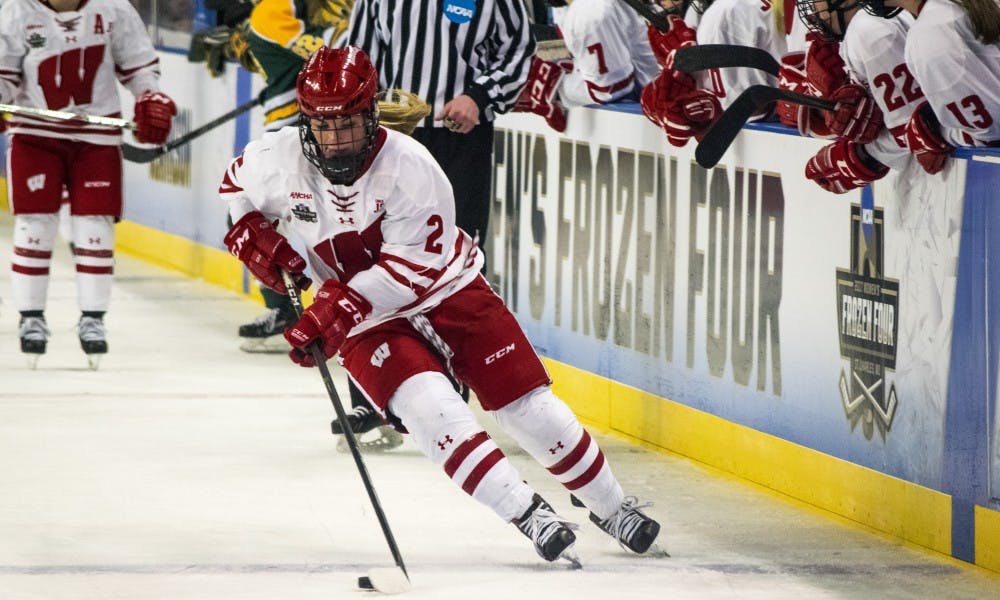
A fractured landscape
Almost every player interviewed said the professional landscape is trending upward, and things are consistently better than they were a few years ago. The CWHL’s attendance figures have increased in each of the past five years, while the NWHL has stabilized revenues since slashing salaries midway through its inaugural season.
The prospect of a merger and the creation of a single league with all of the world’s best players has been the light at the end of the tunnel for many players; the “one league” model has nearly unanimous support throughout the women’s hockey community.
Supporters claim that a single league could better pursue long-term financial sponsors. A lucrative partnership with the NHL could even be on the table.
“The CWHL has some things that are much better than our league, and our league has some things that are much better than their league,” Packer said. “It's tough to get everybody to sit down and agree on who should be in charge and what's the best way to go.”
NHL franchises and the league office have at times played an important role in promoting the expansion of women’s hockey, but support has been piecemeal. In 2012, the Toronto Maple Leafs announced a partnership with the CWHL’s Toronto Furies to provide “funding for coaches, equipment, and travel expenses.” The Calgary Flames followed shortly with a similar agreement to support Team Alberta, in exchange for a rebranding as the CalgaryInferno.
2017 brought a pair of landmarks, as the New Jersey Devils became the first American franchise to affiliate with a women’s team — the newly-renamed Metropolitan Riveters — and the NHL quietly stepped in to provide approximately $25,000 per player per year to resolve USA Hockey’s standoff with its national team members.
But the NHL has been less forthcoming with the wholehearted support of professional women’s hockey that many within the sport believe it should provide. The NHL has no official league partnerships, with NHL deputy commissioner Bill Daly telling the Associated Press “we don’t believe in their models.”
This piecemeal support has created an uneven landscape for compensation, even as the total amount of money going to professional women’s players has increased dramatically in the last four years.
Canadian and American players who make their countries’ 30-member national team rosters can now expect consistent financial support: up to $71,000 for lesser-known American Olympians, along with medal bonuses up to $20,000. That money doesn’t trickle down to the many players outside that elite group who make up the majority of the NWHL and CWHL rosters.
The players interviewed stressed that culturally no tension exists between the Olympians and their professional teammates. But the system has created a structural gap that reinforces the divide between those on the inside and those looking in.
A player who just misses the cutoff for Olympic centralization not only misses out on the chance for six months of full-time hockey training with some of the best players in the world, she’s also denied a valuable revenue stream that could allow her to focus on her sport between Olympic cycles. CWHL and NWHL teams practice just two to three nights a week. Players working nine-to-five are sometimes forced to miss practices or games due to work commitments.
Olympic players, by contrast, have extra ice time provided by their federation to work on skills and conditioning, along with the opportunity to test themselves during frequent national team stints.
“The Olympians are probably the nicest people on the team, they're so down to earth and they're always there to help other people out in need,” Channell said. “But it's tough when you're trying to work a job and you can't just focus on hockey if you're not in the program. If you're outside looking in it's kinda tough to get back into it.”
Many of the players interviewed emphasized that although salaries and economic concerns tend to dominate the discussion of women’s professional hockey, the players are involved for the love of the sport and their desire to advance it, not to get rich.
“Everyone who's doing it right now, the national team players are playing in the league because they're continuing to train, everyone else who does it, it's because they love the game and are trying to grow it so that younger kids have a place to play and a dream that they can chase that's realistic,” Packer said. “It's a tough sell especially when you have the two leagues that are constantly competing against each other. But I think that if you ask any player, I think that's what everybody wants.”
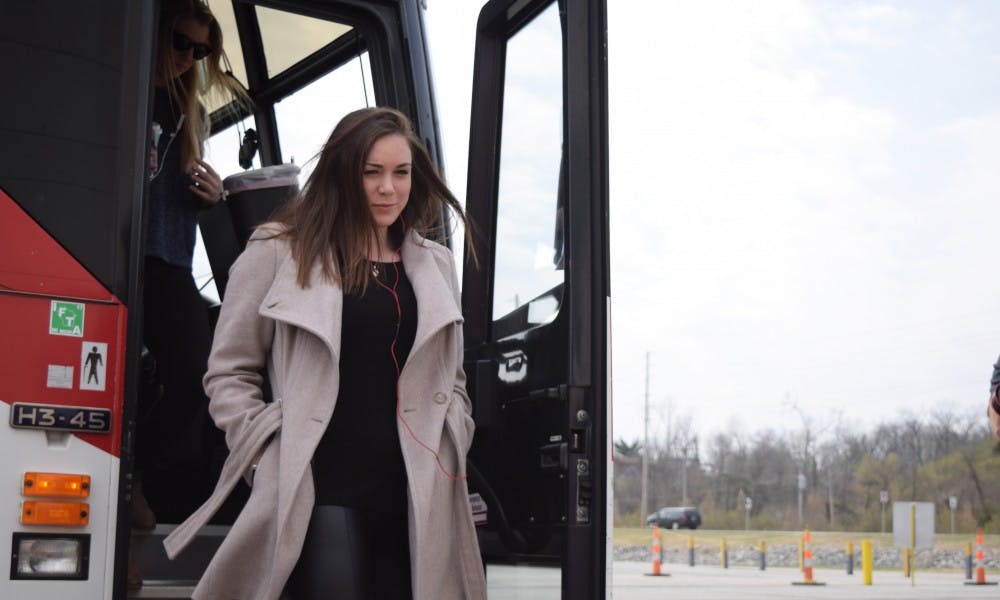
Growing the game
Despite the challenges, the oppotrunity to play professionally is something the players don’t take for granted. Ten years ago, players coming out of college had no league where they could ply their trade. Five years ago, there still wasn’t a North American league offering salaries to players.
“I couldn't have ever imagined when I was a kid playing outside the NHL,” Williams said. “and now knowing that little girls who are much better at hockey than I was at their age, I'm sure, can now look up to us and say 'I want to be playing the CWHL or the NWHL when I'm older' is amazing.”
Women’s hockey is growing at every level; USA hockey registration figures for girls in 2017-’18 were up at every age level from their marks five years prior. Total registration increased more than 20 percent.
The 2018 Winter Olympics in Pyeongchang, South Korea also helped prove that there’s an appetite for women’s hockey at the highest level; 3.7 million people watched the gold medal game between the United States and Canada, despite the game’s 11 p.m. Eastern Time start and its relegation to cable-only network NBCSN. The game’s 2.06 rating was the highest late-night rating in NBCSN’s 15-year history.
The NWHL and CWHL are well-positioned to ride the rising tide of women’s hockey — even more so if they’re able to complete the merger so many fans and players have called for.
Professional women’s hockey’s future in North America is uncertain but bright, players said. No one knows what the landscape will look like when the next Ann-Renée Desbiens graduates college.
But with any luck, she won’t have to make a choice between her sport and her career.


